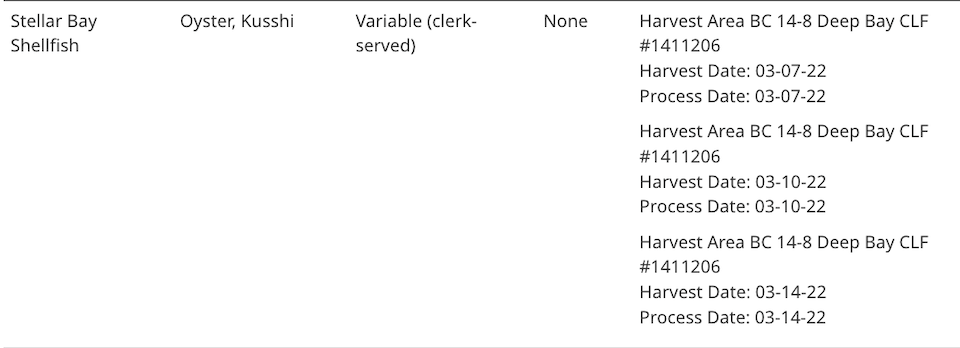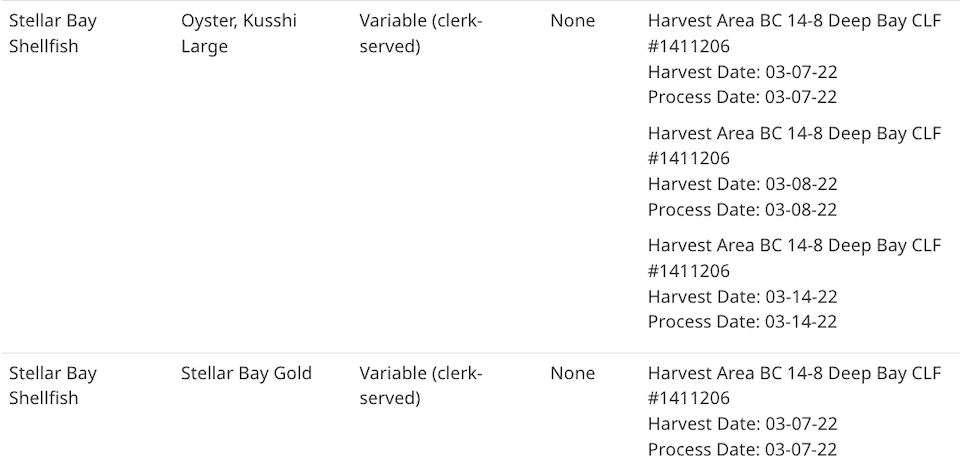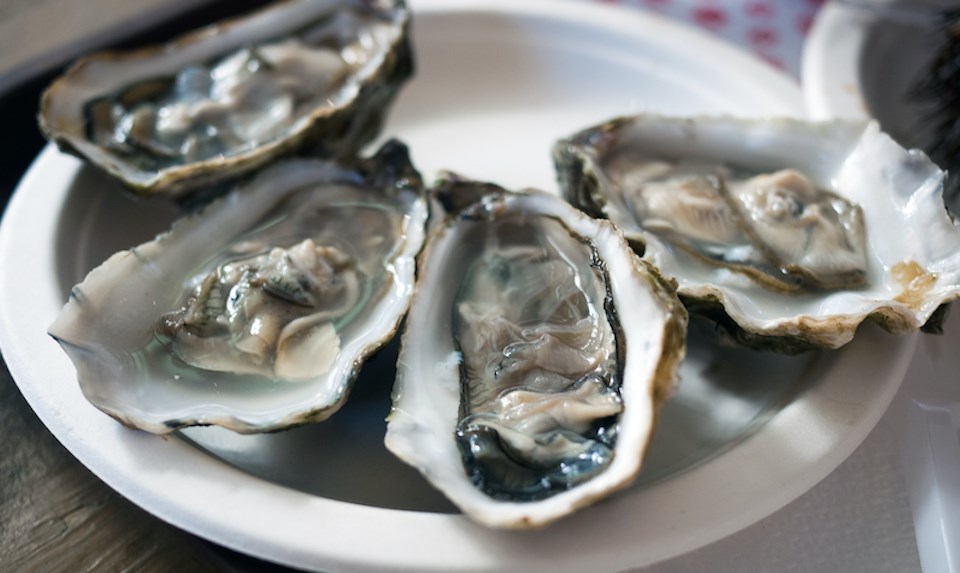Health Canada says 328 cases of norovirus and gastrointestinal illness are linked to the consumption of B.C. oysters across five provinces.
As of April 8, there have been 293 reported cases in British Columbia, three in Alberta, one in Saskatchewan, five in Manitoba, and 16 in Ontario. Individuals became sick from consuming B.C. oysters between mid-January and early April; no deaths have been reported.
The Canadian Food Inspection Agency (CFIA) has closed some oyster harvest areas in B.C. that are associated with the outbreak. The agency is continuing its food safety investigation, which may lead to the recall of other products.


Symptoms of norovirus
Symptoms of norovirus include nausea, cramping, chills, fever, vomiting and diarrhea, and usually occur 12-48 hours after consumption. If you experience diarrhea or vomiting, drink plenty of liquids to replace lost body fluids and prevent dehydration. If you experience these symptoms after eating raw oysters, call BC HealthLink at 811.
If symptoms are severe or persist, seek medical attention. In severe cases, patients may need to be hospitalized and given fluids intravenously.
The main symptoms of norovirus illness are:
- diarrhea
- vomiting (children usually experience more vomiting than adults)
- nausea
- stomach cramps
Other symptoms may include:
- low-grade fever
- headache
- chills
- muscle aches
- fatigue (a general sense of tiredness)
Most people feel better within one or two days, with symptoms resolving on their own, and experience no long-term health effects.
Oyster consumption: How to protect yourself from norovirus
Raw oysters contaminated with noroviruses may look, smell and taste normal. The following safe food-handling practices will reduce your risk of getting sick:
- Do not eat, use, sell, or serve any recalled oysters.
- Avoid eating raw or undercooked oysters. Cook oysters to an internal temperature of 90° Celsius (194° Fahrenheit) for a minimum of 90 seconds before eating.
- Discard any oysters that did not open while cooking.
- Eat oysters right away after cooking and refrigerate leftovers.
- Always keep raw and cooked oysters separate to avoid cross-contamination.
- Do not use the same plate or utensils for raw and cooked shellfish, and wash counters and utensils with soap and warm water after preparation.
- Wash your hands well with soap before and after handling any food. Be sure to clean and sanitize cutting boards, counters, knives and other utensils after preparing raw foods.
Noroviruses can be transmitted by ill individuals and are able to survive relatively high levels of chlorine and varying temperatures. Cleaning and disinfecting practices are the key to preventing further illnesses in your home.
- Thoroughly clean contaminated surfaces, and disinfect using chlorine bleach, especially after an episode of illness.
- After vomiting or diarrhea, immediately remove and wash clothing or linens that may be contaminated with the virus (use hot water and soap).
- If you have been diagnosed with norovirus illness or any other gastrointestinal illness, do not prepare food or pour drinks for other people while you have symptoms, and for the first 48 hours after you recover.




